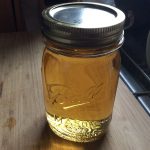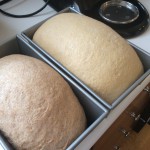Reducing sugar in baked goods can be challenging because sugar plays a crucial role in texture, moisture, browning, and flavor. However, there are ways to cut back on sugar while still maintaining the desired texture and taste. Here are some strategies on low sugar baking that won’t compromise the quality of your baked goods:

1. Gradual Reduction
- Method: Gradually reduce the amount of sugar in your recipes by 10-25% at a time. This helps your taste buds adjust to less sweetness and minimizes the impact on texture.
- Example: If a recipe calls for 1 cup of sugar, start by using 3/4 cup and gradually decrease further in future batches.
2. Use Sugar Substitutes
- Stevia: A natural sweetener that is much sweeter than sugar. Use a blend specifically designed for baking or follow conversion guidelines.
- Erythritol: A sugar alcohol with about 70% of the sweetness of sugar. It can be used cup-for-cup like sugar, but can sometimes have a cooling effect.
- Monk Fruit Sweetener: Another natural option, often blended with erythritol. It can be used as a 1:1 substitute in many recipes.
3. Increase Flavor with Spices and Extracts
- Method: Enhance the perceived sweetness by adding spices such as cinnamon, nutmeg, or vanilla extract. These flavors can make baked goods taste sweeter even with less sugar.
- Example: Add an extra teaspoon of vanilla extract or a pinch of cinnamon to your recipe.
4. Add Fruits and Vegetables
- Method: Incorporate naturally sweet fruits or vegetables like applesauce, mashed bananas, grated carrots, or pureed sweet potatoes. These add sweetness, moisture, and nutrients.
- Example: Replace part of the sugar with applesauce (use 1/2 cup of applesauce for 1 cup of sugar, and reduce other liquids in the recipe accordingly).
5. Use Whole Grains
- Method: Whole grains like whole wheat flour, oats, or spelt have a more robust flavor that can complement a reduced-sugar recipe, making the sweetness more pronounced.
- Example: Substitute half of the all-purpose flour with whole wheat flour in your recipe.
6. Use Dairy or Plant-Based Milk
- Method: Dairy products and some plant-based milks have natural sugars (like lactose) that add to the overall sweetness.
- Example: Use whole milk or almond milk instead of water in your recipes.
7. Honey, Maple Syrup, or Agave Nectar
- Method: These natural sweeteners can replace some of the sugar while adding their unique flavors. Be aware they are liquid, so you might need to adjust the other liquids in the recipe.
- Example: Use 3/4 cup of honey for 1 cup of sugar and reduce other liquids by 1/4 cup.
Practical Example of Low Sugar Baking in a Cookie Recipe
Original Recipe:
- 1 cup sugar
- 2 cups flour
- 1/2 cup butter
- 1 egg
- 1 tsp vanilla extract
Reduced Sugar Version:
- 3/4 cup sugar (reduce by 25%)
- 2 cups flour
- 1/2 cup butter
- 1 egg
- 1.5 tsp vanilla extract (increase for enhanced sweetness)
Tips for Success
- Texture Adjustments: If reducing sugar significantly, consider adding an extra egg or using a bit more fat to help retain moisture and tenderness.
- Moisture Balance: Reduced sugar can affect moisture, so consider adding ingredients that retain moisture, like yogurt or buttermilk.
- Taste Testing: Always taste your batter or dough before baking and adjust sweetness if necessary.
By experimenting with these strategies and making incremental adjustments, you can successfully reduce sugar in your baked goods while maintaining their delicious texture and flavor.



